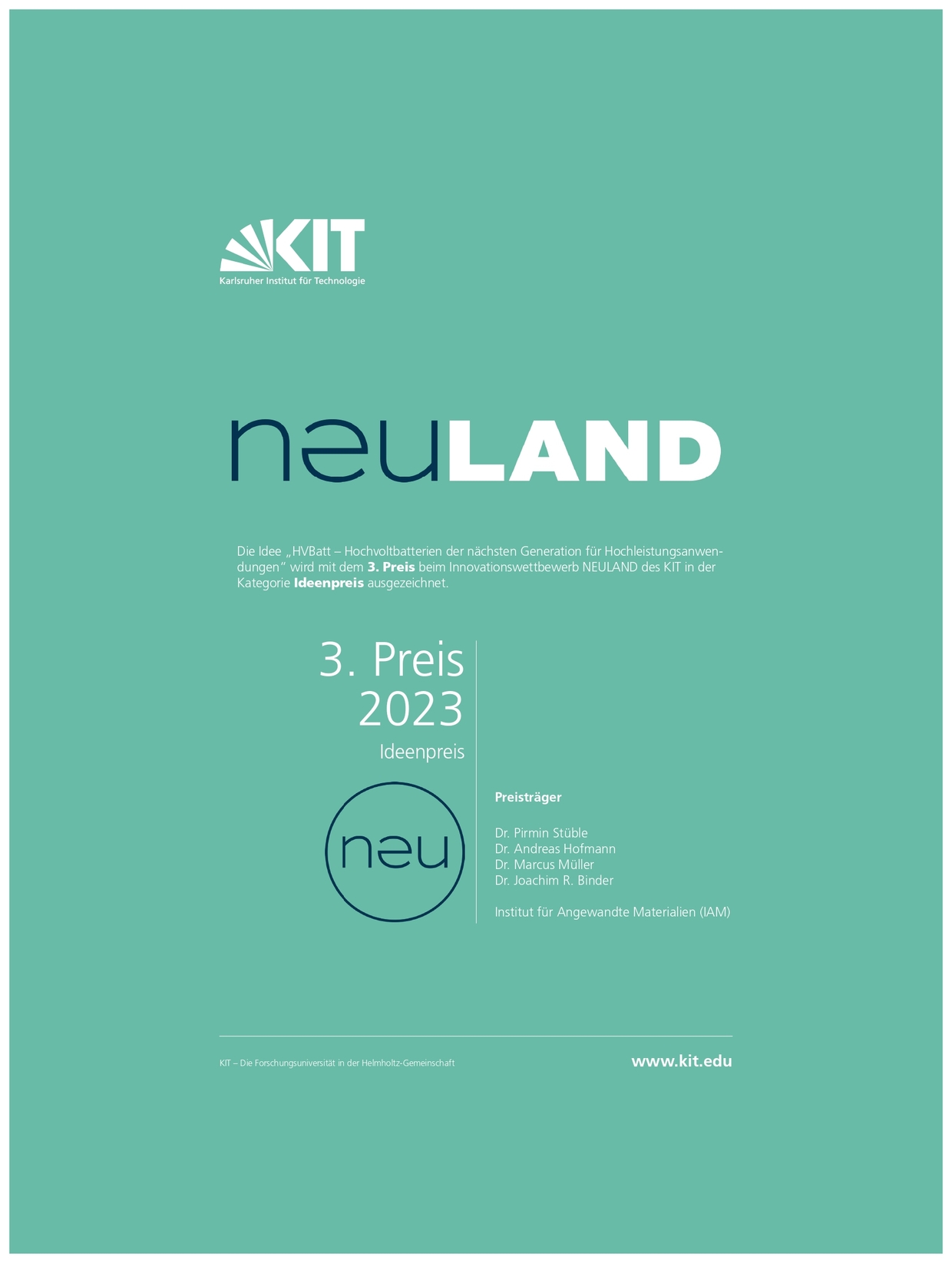KIT Innovation Award for Researchers of IAM-ESS and IAM-WK

3rd place at Neuland Innovation Award
Keywords: innovation award; LNMO; LiNi0.5Mn1.5O4; lithium-ion battery; full cell
The "Neuland" innovation competition annually honors innovative technologies and processes developed at KIT and aims at promoting their market introduction in cooperation with industrial partners.
This year, the 3rd place among 21 submitted ideas was won by researchers from IAM for the improvement of doped LiNi0.5Mn1.5O4 (LNMO) high-voltage spinels as cathode material for the next generation of Li-ion batteries.
Using a high-performance, cobalt-free LNMO active material, the group of scientists from IAM-ESS as well as IAM-WK succeeded in producing batteries that after 1000 charge and discharge cycles still had a capacity of > 90 % relative to the discharge capacity at the beginning of cycling. In the past, this was only achieved for a few hundred cycles. Thus, it was demonstrated for the first time that LNMO-based batteries can meet high requirements in terms of safety, lifetime and stability, as required for mobility applications, for example.
Breakthrough in the application of LNMO high-voltage spinels in Li-ion batteries
This was preceded by extensive research and development work on doped and undoped LNMO materials by the research groupSynthesis and Ceramic Powder Technology. Among other things, it was possible to show how decisive parameters for the service life of battery cells - in particular morphology, cation order and Mn(III) content of the active material - can be controlled specifically and independently of one another.[More] Likewise, the calculation of the exact composition of the spinel active material and its secondary phases was achieved for the first time, from which further trend-setting findings for the optimization of LNMO active materials could be derived. [More]
Another decisive contribution was work on cell additives at the IAM-WK. The groupMaterials and Processesgroup was able to show, after previous work on additives for LNMO whole cell systems, that substantial improvements in cell stability can be achieved by adding crystalline lithium phosphate to the cathode layers.
The results of the close collaboration between the two institutes, which have now been honored as part of the Ideas Award, were recently published in an article in Advanced Science .
